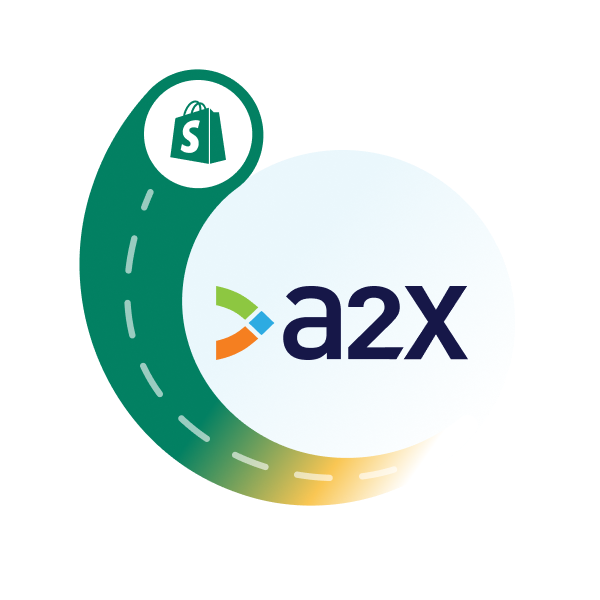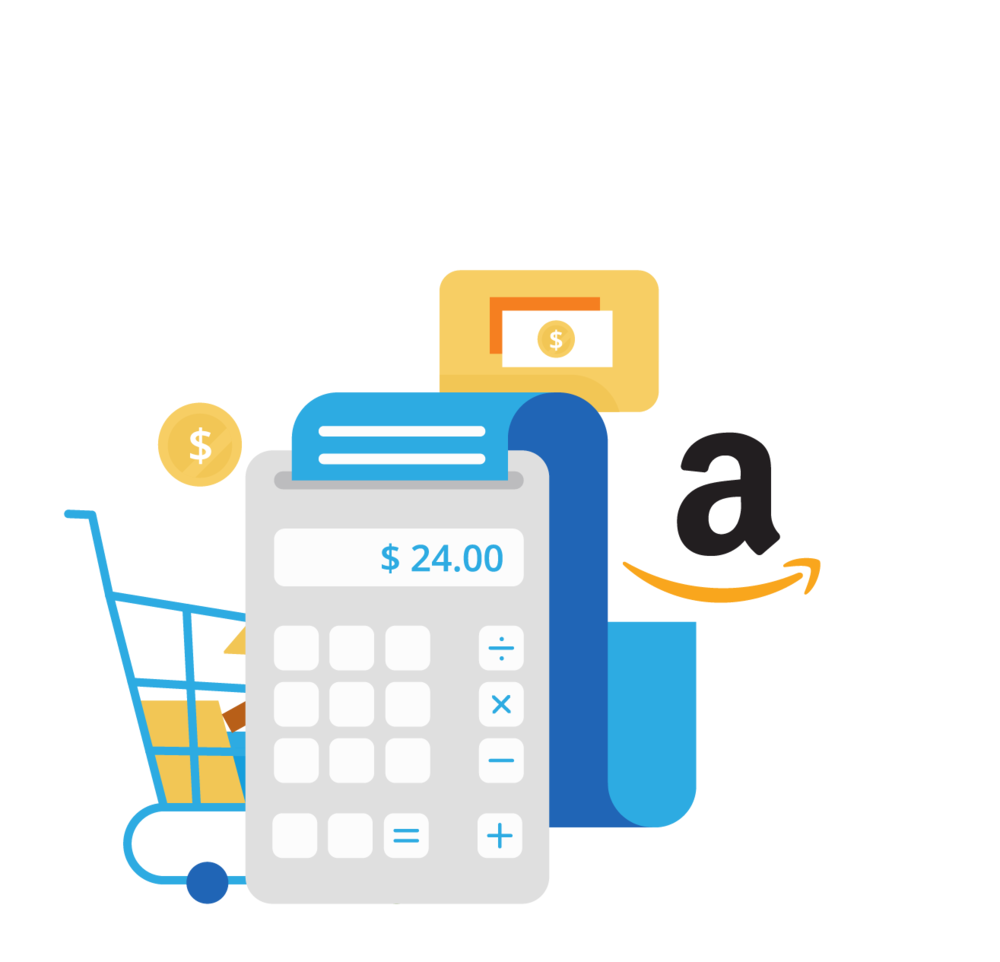Shopify Accounting and Bookkeeping Guide

Handling accounting and bookkeeping for a Shopify store is more complex than it is for a traditional brick-and-mortar business. It involves managing sales tax, reconciling payment gateways, accounting for gift cards, and more, which can confuse even seasoned accounting and bookkeeping professionals.
Our guide is here to help! Whether you’re a Shopify merchant wanting to understand your accounting duties, or an accountant looking to correctly record Shopify sales in QuickBooks or Xero, you’ll find the information you need here.
Key takeaways:
- Shopify accounting and bookkeeping are key to tax compliance and profitability. Tracking sales, fees, refunds, and inventory purchases ensures accurate tax reporting (sales tax, VAT, GST) and financial visibility. Proper Shopify bookkeeping helps merchants monitor profitability with key financial reports like Profit & Loss and Balance Sheets.
- Shopify’s lump-sum payouts and multiple payment methods require accurate reconciliation. Shopify payments include sales, fees, taxes, and other transactions, which must be properly categorized. Accrual accounting offers a clearer financial picture by matching revenue with expenses. Tools like A2X automate Shopify bookkeeping by integrating payouts with accounting software like QuickBooks, Xero, or Sage.
- Automation and expert support make Shopify accounting easier. Manual bookkeeping is time-consuming and prone to errors. Using accounting software with Shopify and working with an ecommerce accountant ensures accurate reporting, tax compliance, and better financial decision-making.
Still have questions about Shopify accounting? You can always reach out to the A2X team at
contact@a2xaccounting.com.
Table of Contents
Integrate Shopify and your accounting software for accurate accounting
A2X auto-categorizes your Shopify sales, fees, taxes, and more into accurate summaries that make reconciliation in your general ledger a breeze.
Try A2X today
Getting started with Shopify accounting and bookkeeping
Not sure where to start when it comes to accounting and bookkeeping for Shopify? No worries! We’ll cover the basics.
What’s the difference between accounting and bookkeeping?
Bookkeeping is the process of recording all your business transactions, like sales, expenses, and payments. It’s about keeping track of your financial data in an organized way.
Accounting takes that financial data and analyzes it to create reports, like profit and loss statements, balance sheets, and tax returns. It’s about interpreting the numbers to understand the financial health of your business and make informed decisions.
In short, bookkeeping is about recording data, and accounting is about using that data to understand and manage your business finances.
Why am I required to do accounting and bookkeeping for my Shopify store?
There are a few reasons why accounting and bookkeeping are important and, in most cases, necessary for Shopify merchants:
- Compliance with various legislations for every applicable region.
- Business visibility on the financial operations and performance of your store(s).
- For sound decision making, scalability, and direction of your ecommerce venture.
- Product pricing and cost determination.
- Timely and accurate financials provide relevant data to support growth and profitability.
This list is not exhaustive, but having accurate accounting and bookkeeping for your financials is a very essential part of growing and achieving success in your business.
Your exact accounting and bookkeeping obligations will vary based on your location, your type of business (i.e., whether your business is classified as a sole proprietorship, partnership, Limited Liability Corporation (LLC), corporation, or nonprofit), and whether or not you are registered for sales tax, VAT, GST, etc.
We strongly recommend working with an accounting or bookkeeping professional who specializes in working with Shopify merchants to understand your requirements.
Regardless of your Shopify business classification and tax registration status, it’s a good idea to get started with the basics of accounting and bookkeeping.
For bookkeeping, this includes:
- Separating your business finances from your personal finances.
- Record-keeping – i.e., maintaining detailed and accurate records of all financial transactions, including income, expenses, and payments.
- Regular reconciliation of bank transactions and Shopify sales transactions, including your payment gateways, etc. to maintain accurate financial records.
For accounting, this includes:
- Preparing essential financial statements such as Profit and Loss statements, balance sheets, and cash flow statements.
- Filing accurate and timely tax returns according to the business’s legal structure and ensuring compliance with all relevant tax laws and regulations.
Cash vs. accrual accounting for Shopify
Cash and accrual accounting are two methods you can use to complete your Shopify accounting.
In cash accounting, transactions are recorded when cash is actually received or paid out. For Shopify merchants, this means that sales are recorded when the payment is received, and expenses are recorded when they are paid. The cash accounting method is beneficial for small businesses with simple transactions, providing a real-time snapshot of cash on hand. However, it may not accurately reflect the business’s financial health if there are outstanding receivables or payables.
Accrual accounting is recognized as best practice for ecommerce accounting. In accrual accounting, transactions are recorded when they are incurred, regardless of when cash is exchanged. For Shopify merchants, this means that sales are recorded when the order is placed, not when payment is received, and expenses are recorded when they are billed, not when paid.
The accrual method provides a more accurate picture of profitability and long-term financial health, as it matches revenue with expenses incurred to generate that revenue. With the right tools, accrual accounting can be completed easily.
Can you use Shopify for accounting?
No, Shopify does not have the functionality to manage your store’s accounting and bookkeeping.
Shopify provides the data you need for accounting/bookkeeping purposes; however, these reports by themselves do not meet the standards required for accounting and bookkeeping compliance.
Using only Shopify reports and data as your “source of truth” for understanding your Shopify store performance can also cause issues because they may not capture all financial activities, such as external expenses, multi-channel sales, or detailed tax implications, leading to an incomplete and potentially misleading view of your business’s overall financial health.
Do I need accounting software for my Shopify store?
If you’re running a really small Shopify store with a low transaction volume, then you could use a spreadsheet to manage your accounting and bookkeeping. However, keep in mind that spreadsheets need to be manually updated and are prone to human error.
We strongly recommend using accounting software for your Shopify store because it will make accounting much easier via automation. In just a few clicks, you’ll be able to generate a Profit and Loss statement, balance sheet, cash flow statement, and other reports you might need.
What’s the best accounting software for Shopify merchants? The decision is up to you, but most Shopify stores use QuickBooks Online, Xero, Sage, or Netsuite, depending on factors such as business size, location, and feature requirements.
One more important factor to keep in mind when seeking accounting software for your Shopify store is that many accounting tools do not directly integrate with Shopify, which means that you need an external tool (such as A2X) to get your Shopify data into your accounting software (more information about this below).
Do I need a Shopify accountant or bookkeeper?
As with accounting software, we also strongly recommend Shopify merchants work with an accounting or bookkeeping professional who specializes in working with Shopify stores.
Because Shopify accounting and bookkeeping is more complicated than it is for a traditional brick-and-mortar store, it’s important to find someone who knows what they’re doing so you remain compliant and really understand your margins.
Where can you find an accountant or bookkeeper who works with Shopify merchants? Check out A2X’s Ecommerce Accountant Directory – enter information about your business or choose to “get matched” with an accountant or bookkeeper who’s the right fit for you.
What makes Shopify accounting and bookkeeping complicated?
Ecommerce accounting is crucial for online retailers, especially when using platforms like Shopify. As one of the largest platforms for online sellers, Shopify allows merchants to add and select multiple sales channels, accept various payment methods at checkout, and manage their inventory within the app.
These integrations and third-party applications complicate the flow of transactions, making accounting more intricate. It involves meticulous tracking and categorizing of financial transactions to meet the unique demands of Shopify sales. Best practices include regular reconciliation of accounts, understanding sales tax obligations, and using specialized software for efficiency.
It’s important to note that Shopify bookkeeping requires accurate reconciliation – ensuring the Shopify payout amount in your bank account matches your sales, expenses, and other financial records.
This is often where confusion arises. A common mistake Shopify sellers make is recognizing the total amount received in the bank as sales or income. This not only leads to incorrect accounting but also poses significant risks for tax compliance.
Let’s drill down into the specifics of how some Shopify transactions should be accounted for.
Lump sum payments
Shopify payments payout occur in lump sum amounts. However, this full amount is not just made up of “sales”, and therefore should not be recorded entirely to a “sales” or “income” account.
The payout amount is actually made up of a combination of sales, fees, refunds, gift cards, taxes, and other transactions.
It’s important to be able to see the transactions that make up each payout, and record them to the correct Chart of Accounts.
If you were to report this amount as “sales”, then you risk over or under-reporting on revenue, which can cause you to over or under-pay any necessary tax, and get incorrect data about how your business is performing.
How to reconcile: Shopify provides data that can help you understand the transactions that make up each payout; however, going through each report and manually coding each transaction can take up a lot of time.
The solution? Integrating Shopify with your accounting software using a tool like A2X. After connecting A2X to Shopify and QuickBooks Online, Xero, or Sage, A2X will break down the transactions that make up each payout and send that information over to your general ledger in your accounting software.
Then, reconciliation can happen in just one click. Easy!
Payout periods
Shopify payouts may not align perfectly with monthly bookkeeping periods – e.g., when a payout crosses a month-end boundary (August 28 - September 5).
Proper accrual accounting dictates that revenue should be recognized when it is earned, regardless of when the payment is actually received – so you’ll want to record the sales that occurred in August, in August (and the same for September).
Mismatches in revenue tracking can also cause inaccurate reporting. For example, if there’s a mismatch between tracking revenue and tracking the Cost of Goods Sold (COGS), it will skew profit margins.
How to reconcile: You could manually go into Shopify and try to break down when sales were made; or, you could use A2X – A2X will split the settlement data according to the month in which the sales or transactions actually occurred, ensuring that your financial accounts properly record the transactions in the correct month.
Other payment gateways
“Other payment gateways” simply refers to payments received outside of the Shopify payments network. They can be related to a specific payment merchant provider or an offline payment (e.g. cash, check, manual payments).
As mentioned, Shopify can accept more than one payment method on a Shopify store’s checkout page, meaning that merchants can choose to add these payment methods and receive payments directly from the payment provider, e.g., Paypal.
While using payment gateways like Sezzle, Klarna, Afterpay, and others is an excellent way for Shopify merchants to offer diverse payment options and enhance their store experience, these gateways introduce complexity to Shopify bookkeeping because of their different processing fees and transaction timelines, making account reconciliation more difficult.
How to reconcile: Reconciliation will depend on the particular payment gateway and your accounting software of choice because each gateway may report sales, refunds, and fees differently. Get started by watching this payment gateway webinar tutorial.
Third-party apps
Shopify merchants also have the option to use a number of third-party apps to help automate various operations for their Shopify store. Just a few examples include:
When third party applications are integrated with Shopify, the order data may be represented differently in Shopify (compared to a native Shopify order), which can add complexity and confusion in the reconciliation process.
To reconcile: As with other payment gateways, each third-party app will require its own reconciliation process. It’s most important to first make sure you’re capturing all transaction data from third-party apps (which is something that A2X can help you with!).
Transaction types
In addition to transactions from Shopify Payments and other payment gateways, there are a number of other transactions that need to be accounted for, including (but not limited to):
- Refunds and returns (accounting for which also may include inventory adjustments)
- Discounts and promotions (requires tracking of promotional costs and their impact on sales)
- Shipping and handling (requires separate tracking for shipping income and shipping expenses)
- Credit/debit transaction lines (which could encompass a number of different types of transactions, such as Facebook marketplace expenses, fees, withheld tax, Shopify subscription charges, Shop Cash credit, etc.)
- Gift card transactions (accounting for gift card sales vs. issued gift cards – gift cards are typically recorded as liabilities until redeemed, and need to be accurately recorded to reduce the liability and recognize revenue)
…and more!
To reconcile: You’ll first need to ensure that all transactions are being captured. Then, each transaction type listed above will require a slightly different treatment to ensure it’s being recorded correctly. A2X can ensure all Shopify transaction types are recorded so your books are accurate and up to date.
Shopify sales tax
While Shopify has features that can help calculate sales tax and/or VAT, Shopify is not responsible for filing or remitting tax for you.
To accurately report and file taxes, you’ll need to collect detailed data on all transactions, categorize them correctly, and submit timely returns. Errors can lead to penalties and audits.
How to record tax/VAT transactions: A2X can help to ensure that all tax/VAT collected is captured and coded correctly (e.g., to a liability account on the balance sheet) so your records are accurate when it’s time to file a return (or in the event of an audit).
How to do Shopify bookkeeping
Shopify accounting reports and activities (e.g., building a Profit and Loss) are built off of good data, which comes from accurate bookkeeping.
Below, we’ve linked to a couple of in-depth guides for completing Shopify bookkeeping in QuickBooks Online or Xero.
Shopify bookkeeping in QuickBooks Online: Step-by-step guide
We have a few resources to help you learn the exact steps to complete monthly bookkeeping for Shopify in QuickBooks Online.
Read our step-by-step guide for Shopify-QBO bookkeeping here.
You can also download our free customizable checklist – feel free to modify with any specificities for your Shopify bookkeeping process.
We also recommend watching the following webinar, where accounting expert Brittany Brown from LedgerGurus walks through each step in detail.
Shopify bookkeeping in Xero: Step-by-step guide
We also have a few resources to help you learn the exact steps to complete monthly bookkeeping for Shopify in Xero.
Read our step-by-step guide for Shopify-Xero bookkeeping here.
We also recommend watching the following webinar, where accounting expert Wayne Richard from Bean Ninjas walks through each step in detail.
Integrate Shopify and your accounting software for accurate accounting
A2X auto-categorizes your Shopify sales, fees, taxes, and more into accurate summaries that make reconciliation in your general ledger a breeze.
Try A2X today



